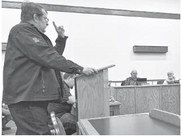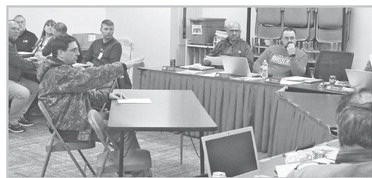Deer numbers in Clark County vary widely; CDAC attempts to manage diverse habitat
Some deer hunters who head afield in Clark County for the state’s nine-day gun season that begins on Nov. 23 can expect to see a healthy population of animals. Others may not. It kind of just depends on where you hunt.
The County Deer Advisory Committee (CDAC) that has been setting population goals and antlerless permit numbers over the past several years has been dealing with the spotty presence of deer in the county’s mix of farm area woodland plots and the expansive 134,000-acre county forest. The CDAC has been trying to satisfy two distinct groups of hunters — one that is seeing plenty of deer and may even think the population is exceeding the land’s carrying capacity, and a second group that’s saying, “Hey, where are all the deer we used to see?”
Clark County has two distinct hunting regions, and that is why it is separated into a farmland management unit that covers the northern and eastern two-thirds of the county, and a forest management unit that roughly follows the outline of the large county forest. It’s not a one-size-fits-all county when it comes to managing deer, and it’s not an area where hunters will see similar numbers of deer in widely-varying habitat.
Many of the complaints the CDAC has been hearing in recent years are from those who prowl the county forest in search of their venison. Devoid of the luscious farm crops found in the farmland area of the county, the forest management unit is naturally not likely to have as many deer per acre, and hunters there are telling the CDAC that past generous antlerless quotas wiped out a oncehealthy herd. Survey input the CDAC has solicited tells the story of what hunters are seeing.
“Our group of hunters (6) have hunted in the forest for more than 30 years,” said one survey respondent. “The sightings of deer (any) has been drastically reduced the past 10 years due to over-harvest of does. The wolves have not helped as well. When are you going to reduce the antlerless permits to zero so we can actually see deer and not predators?”
In response to that sentiment, the CDAC has in recent years increased the ratio of antlerless permits that are available to private land hunters, and decreased the number for public lands. As well as setting a general goal of increasing the herd size in the forest management unit, providing fewer doe permits on county forest land is meant to boost deer numbers there.
“Your goal is to increase the population,” said another survey respondent. “Why are you offering ANY additional permits? Your goal is correct, but your actions don’t support your own goal. We see and have SO FEW deer in the forest zone, I would support any MORE AGGRESSIVE practice to return/increase the deer population.”
Another respondent said, “I have been hunting this area for 20 years and the deer population is less than years ago. Do I expect to see 30-plus deer on opening day of gun hunting? No, but our group hunts very hard during the bow hunting and gun season and the amount of deer we see has been less and less every year. I would vote for no antlerless tags for the 2019 season.”
On the flip side, the CDAC has heard comments from hunters who want to be able to get a bonus antlerless tag to hunt public acreage, but cannot because more tags have been diverted to private hunters.
“Would like to see an increase in number of antlerless bonus tags available for the public sector,” said another survey-taker. “Currently too much antlerless tags for private sector. Public sector brings more economy to the area.”
In the farmland area of Clark County, an overabundance of deer is on some hunters’ minds. Especially





